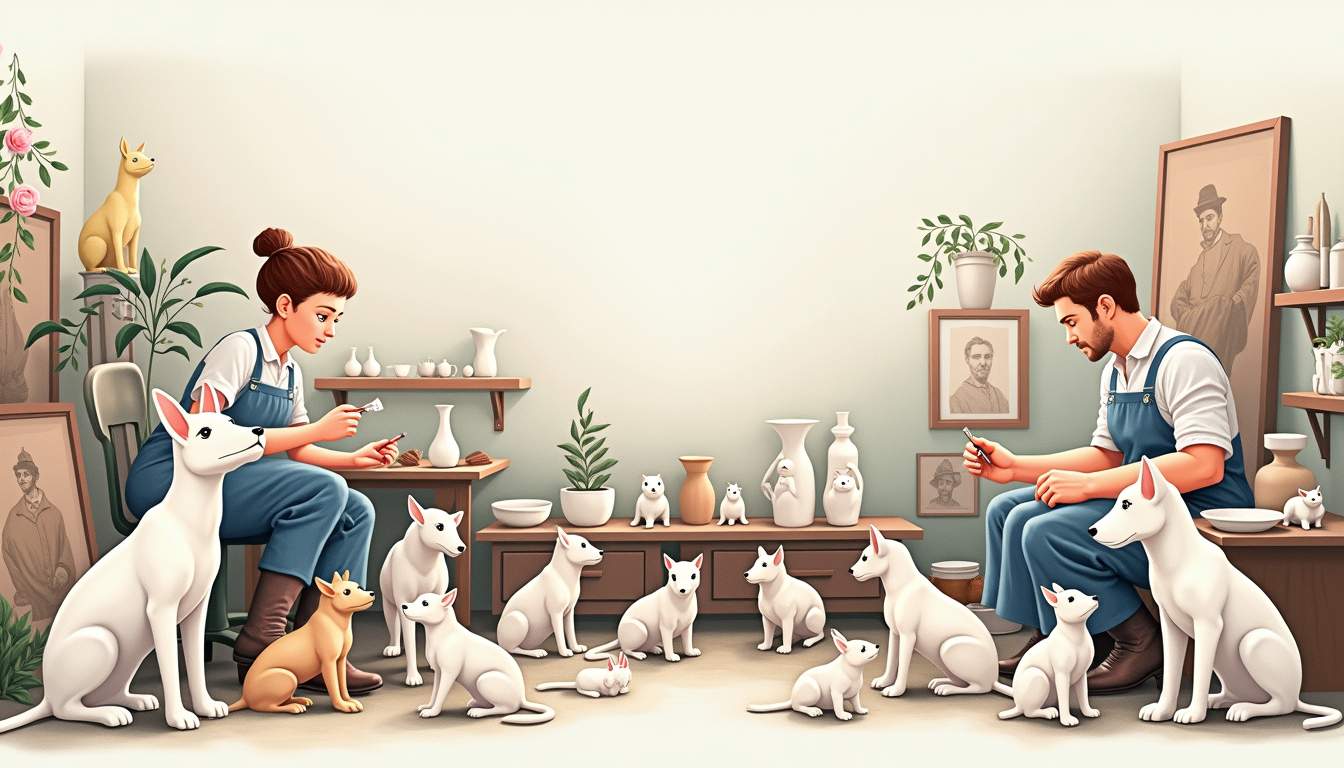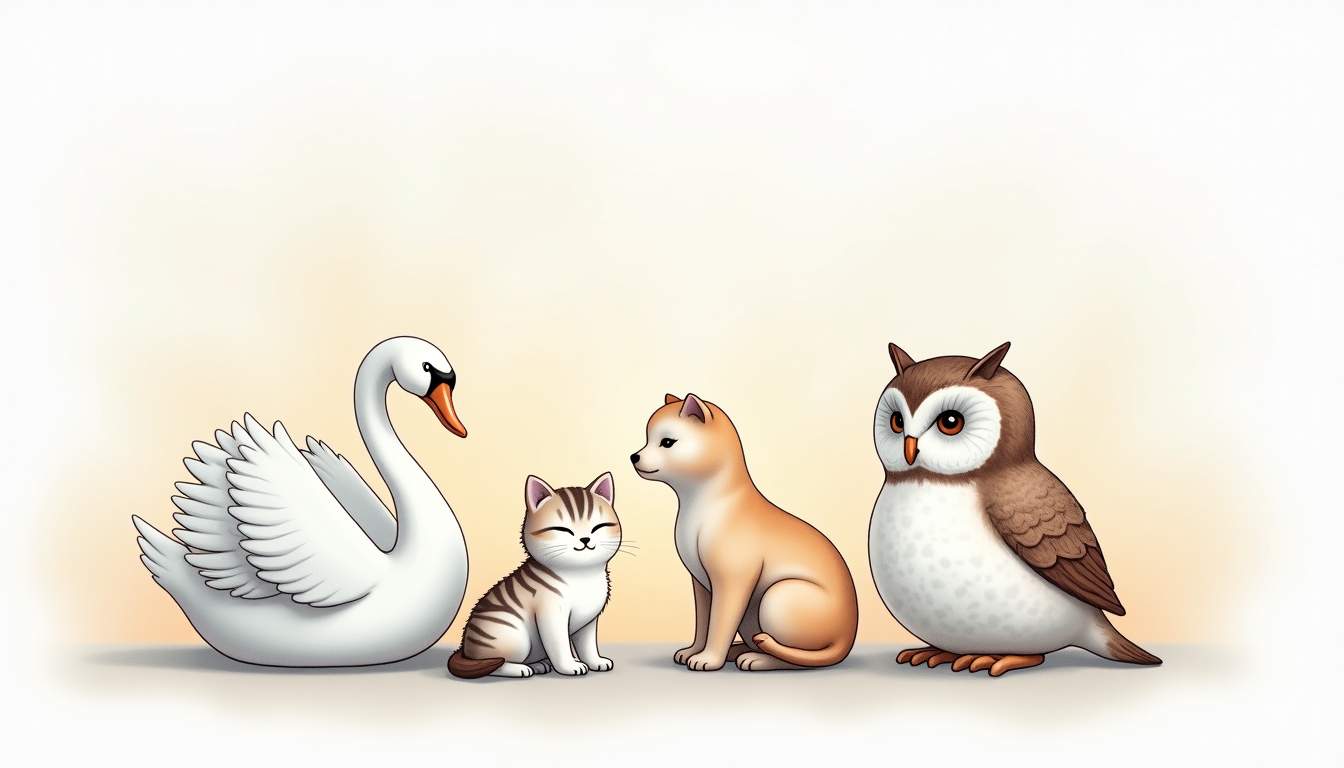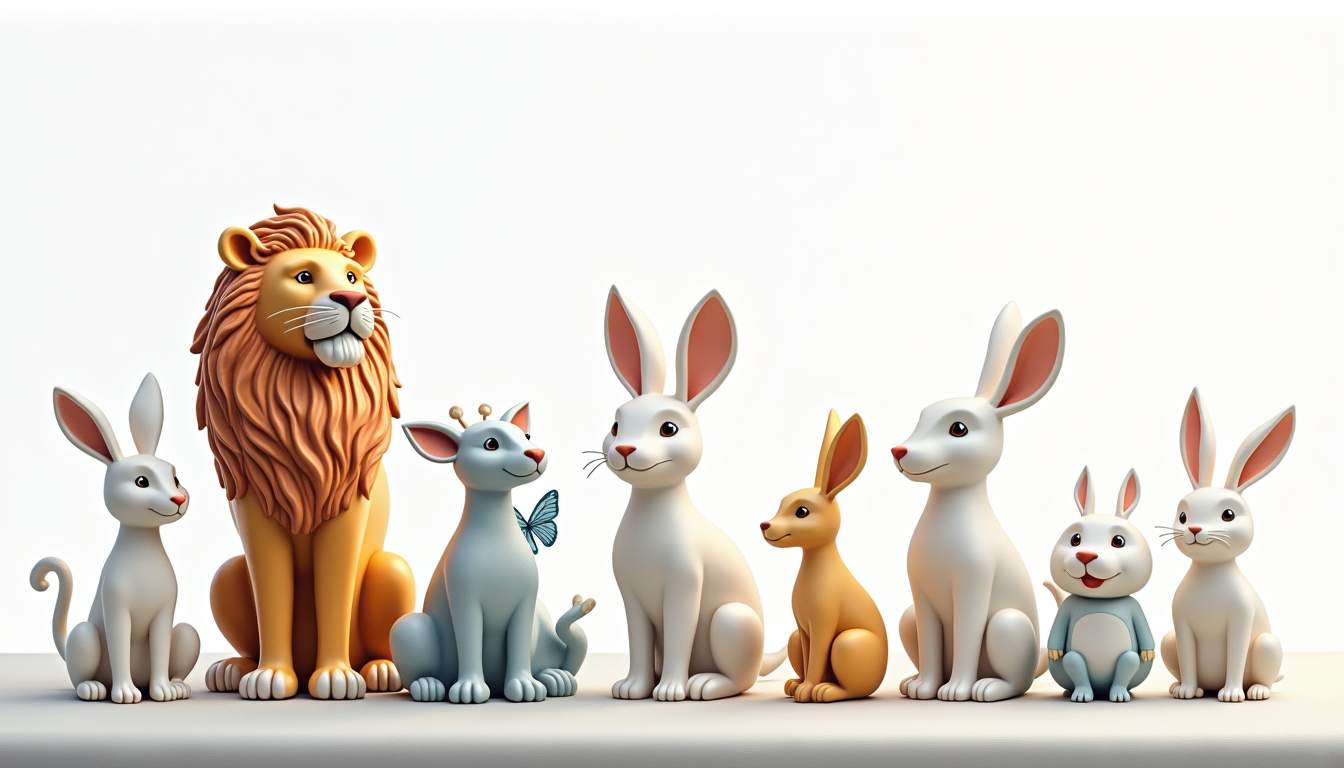Porcelain animal figurines have long captured the hearts of collectors and art enthusiasts alike. These delicate sculptures, crafted with meticulous care and artistic finesse, serve as timeless treasures that bring charm and elegance to any space. From the graceful curves of a swan to the playful stance of a fox, each figurine tells a story—one of craftsmanship, tradition, and the enduring beauty of nature immortalized in porcelain.
The Art and History of Porcelain Animal Figurines
Porcelain, often referred to as “white gold,” has a rich history dating back to ancient China, where it was first developed during the Tang Dynasty. Its unique qualities translucency, strength, and smooth finish—made it an ideal medium for artistic expression. Animal figurines, in particular, became popular as both decorative objects and symbols of cultural significance. In Chinese culture, certain animals are imbued with deep symbolic meanings; for instance, the dragon represents power and strength, while the phoenix symbolizes rebirth and renewal. This cultural significance has contributed to the enduring popularity of porcelain animal figurines, as collectors and enthusiasts seek pieces that resonate with their personal beliefs or aspirations.

In Europe, porcelain production blossomed in the 18th century, with renowned manufactories like Meissen in Germany and Sèvres in France leading the way. These workshops elevated porcelain figurines to an art form, combining technical skill with artistic creativity. Animal motifs were especially favored, often representing virtues such as loyalty, wisdom, or courage. The intricate designs and vibrant colors used by these European artisans not only showcased their craftsmanship but also reflected the tastes and trends of the time. For example, during the Rococo period, figurines often featured playful scenes with animals in whimsical poses, highlighting a shift towards more lighthearted and imaginative representations.
Today, handcrafted porcelain animal figurines continue this legacy, blending traditional techniques with contemporary designs. Each piece is a testament to the enduring appeal of porcelain as a medium and the timeless fascination with the animal kingdom. Modern artists often draw inspiration from both nature and fantasy, creating unique interpretations that resonate with today’s collectors. Some figurines even incorporate mixed media elements, such as metal or glass, to enhance their visual impact. This evolution in design not only keeps the art form fresh and relevant but also invites a new generation of enthusiasts to appreciate the beauty and craftsmanship of porcelain animal figurines.
From Clay to Masterpiece: The Crafting Process
Creating a porcelain animal figurine is a painstaking process that demands patience, precision, and passion. It begins with selecting the finest kaolin clay, prized for its purity and whiteness. The artist then sculpts the initial model, often starting with a rough shape that gradually takes form through careful carving and refining. This initial sculpting phase is crucial, as it lays the foundation for the character and expression of the animal. Artists often study live animals or photographs to capture the essence of their subjects, ensuring that each figurine conveys the right posture and emotion.
Once the model is perfected, molds are made to reproduce the figurines. However, handcrafted pieces often involve additional hand-sculpting to add unique details and textures that bring the animal to life. After drying, the figurine undergoes a bisque firing, which hardens the clay and prepares it for glazing. This firing process is not merely functional; it also reveals any imperfections that need to be corrected before the final glaze is applied. Glazing is a critical step that enhances the figurine’s durability and aesthetic appeal. Artists apply layers of glaze, sometimes incorporating hand-painted details that highlight the animal’s features—such as the shimmer of a bird’s feathers or the delicate whiskers of a cat. The final firing vitrifies the glaze and clay, resulting in a lustrous, resilient work of art. Some artists experiment with different glazing techniques, such as underglazing or overglazing, to achieve varied textures and finishes, further enriching the visual narrative of each piece.
Why Collect Handcrafted Porcelain Animal Figurines?
Collecting porcelain animal figurines is more than just acquiring decorative objects; it is an appreciation of artistry, history, and nature. Each figurine embodies a unique blend of cultural heritage and personal expression, making it a meaningful addition to any collection.

Handcrafted pieces, in particular, hold special value. Unlike mass-produced items, they reflect the individual artist’s skill and vision. Subtle variations in color, texture, and form ensure that no two figurines are exactly alike, giving each one a distinctive character.
Emotional and Aesthetic Appeal
Animals have always held a special place in human culture, symbolizing traits we admire or aspire to. Porcelain figurines capture these qualities in miniature form, allowing collectors to connect emotionally with the pieces. Whether it’s a majestic lion symbolizing strength or a gentle deer representing grace, these figurines evoke feelings and memories.
Moreover, the aesthetic beauty of porcelain—with its smooth surfaces and delicate translucency—adds a touch of elegance to any setting. Displayed on shelves, mantels, or in glass cabinets, these figurines become focal points that spark conversation and admiration.
Investment and Legacy
Fine handcrafted porcelain animal figurines often appreciate in value over time, especially those made by renowned artists or historic manufactories. Collectors may view their acquisitions as investments that combine financial worth with artistic merit.
Beyond monetary value, these figurines can become cherished heirlooms, passed down through generations. Their timeless appeal ensures they remain relevant and treasured, connecting family members through shared appreciation of art and nature.
Popular Themes and Styles in Porcelain Animal Figurines
The diversity of animal figurines available today reflects the vast range of styles and themes embraced by artists and collectors. From realistic wildlife representations to whimsical fantasy creatures, porcelain offers endless possibilities.

Realistic Wildlife and Nature-Inspired Designs
Many porcelain artists specialize in lifelike depictions of animals, capturing intricate details such as fur texture, muscle definition, and natural poses. These figurines often celebrate the beauty of the natural world, featuring species from various habitats—forest creatures like foxes and owls, marine animals such as dolphins and seahorses, or exotic wildlife like tigers and elephants.
Such realistic figurines appeal to nature lovers and wildlife enthusiasts, serving as reminders of the planet’s rich biodiversity. They also provide educational value, illustrating anatomy and behavior in a tangible form.
Whimsical and Fantasy Animals
On the other end of the spectrum are whimsical and fantastical figurines that blend imagination with craftsmanship. These pieces might depict animals with exaggerated features, playful expressions, or mythical qualities—unicorns, dragons, or animals dressed in human attire.
These figurines often bring a sense of joy and wonder, appealing to collectors who appreciate creativity and storytelling. They can add a lighthearted touch to home decor or serve as unique gifts that spark the imagination.
Traditional and Cultural Motifs
Many porcelain animal figurines draw inspiration from cultural symbolism and traditional art forms. For example, the Chinese zodiac animals are popular motifs, each representing specific personality traits and fortunes. Similarly, European folk art often features stylized animals imbued with regional significance.
Collectors interested in cultural heritage may seek out these figurines for their historical context and symbolic meaning, enriching their collections with stories that transcend time and geography.
Care and Display Tips for Porcelain Animal Figurines
Proper care and thoughtful display are essential to preserving the beauty and value of handcrafted porcelain animal figurines. These delicate pieces require gentle handling and an environment that protects them from damage.
Handling and Cleaning
When handling porcelain figurines, it is important to use clean, dry hands or wear cotton gloves to avoid transferring oils and dirt. Support the figurine from its base rather than delicate appendages to prevent breakage.
Cleaning should be done with a soft brush or a lint-free cloth. For stubborn dust, a mild soap solution and lukewarm water can be used, but the figurine must be dried thoroughly afterward. Avoid harsh chemicals or abrasive materials that could damage the glaze or paint.
Optimal Display Conditions
Porcelain figurines should be displayed in a stable, secure location away from direct sunlight, which can cause fading or temperature fluctuations that may lead to cracking. Glass cabinets with controlled lighting are ideal for showcasing collections while protecting them from dust and accidental knocks.
Grouping figurines by theme, size, or color can create visually appealing arrangements. Incorporating elements like mirrored backdrops or soft LED lighting can enhance the figurines’ delicate details and translucent qualities.
The Future of Handcrafted Porcelain Figurines
While modern technology has introduced new materials and production methods, handcrafted porcelain animal figurines remain a cherished art form. Contemporary artists continue to innovate, blending traditional techniques with fresh perspectives to keep the craft vibrant and relevant.
Advances in kiln technology and glazing methods allow for more intricate designs and durable finishes, while collaborations between artists and designers open new avenues for creativity. Additionally, the rise of online platforms has expanded access to rare and unique figurines, connecting collectors worldwide.
Supporting Artisans and Sustainable Practices
As demand for handcrafted porcelain grows, there is increasing awareness of the importance of supporting artisans who dedicate their lives to this craft. Purchasing directly from artists or reputable studios helps sustain traditional skills and encourages ethical production practices.
Moreover, many contemporary porcelain artists are embracing sustainability by sourcing eco-friendly materials and minimizing waste. This commitment ensures that the timeless beauty of porcelain animal figurines can be enjoyed by future generations without compromising environmental responsibility.
Personalizing Your Collection
Customization is becoming a popular trend, with artists offering bespoke figurines tailored to individual tastes or commemorating special occasions. Personalized pieces add sentimental value and deepen the connection between collector and artwork.
Whether it’s a figurine modeled after a beloved pet or a unique design inspired by a favorite animal, these custom creations highlight the enduring appeal of porcelain as a medium for personal expression.
Conclusion
Handcrafted porcelain animal figurines are more than decorative objects—they are timeless treasures that embody artistry, tradition, and the beauty of the natural world. Their delicate forms and intricate details invite admiration and inspire connection, making them cherished possessions for collectors and art lovers alike.
Whether drawn to realistic wildlife, whimsical fantasy creatures, or culturally significant motifs, collectors find in these figurines a source of joy, inspiration, and legacy. Through careful care and thoughtful display, these porcelain masterpieces continue to enchant, bridging the past and present with elegance and grace.
In a world that often moves too quickly, these timeless treasures offer a moment to pause, appreciate craftsmanship, and celebrate the enduring bond between humans and the animal kingdom.


